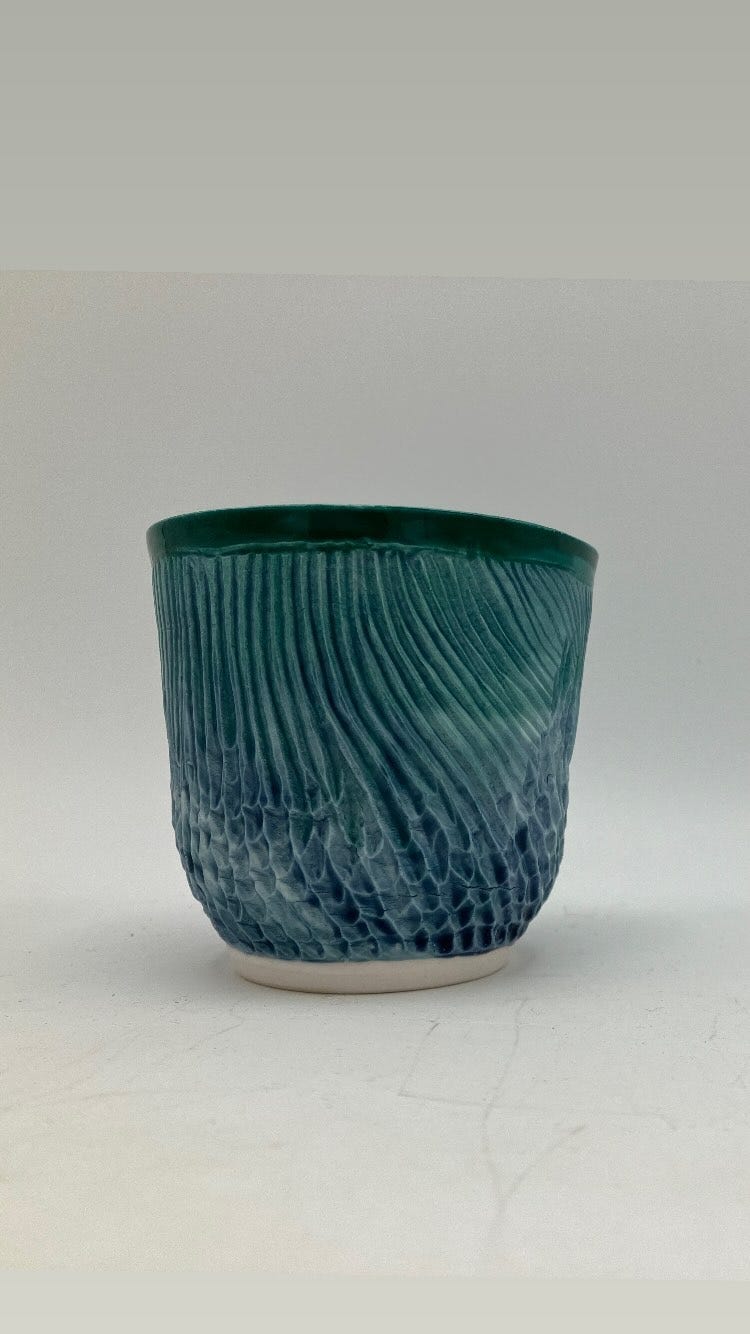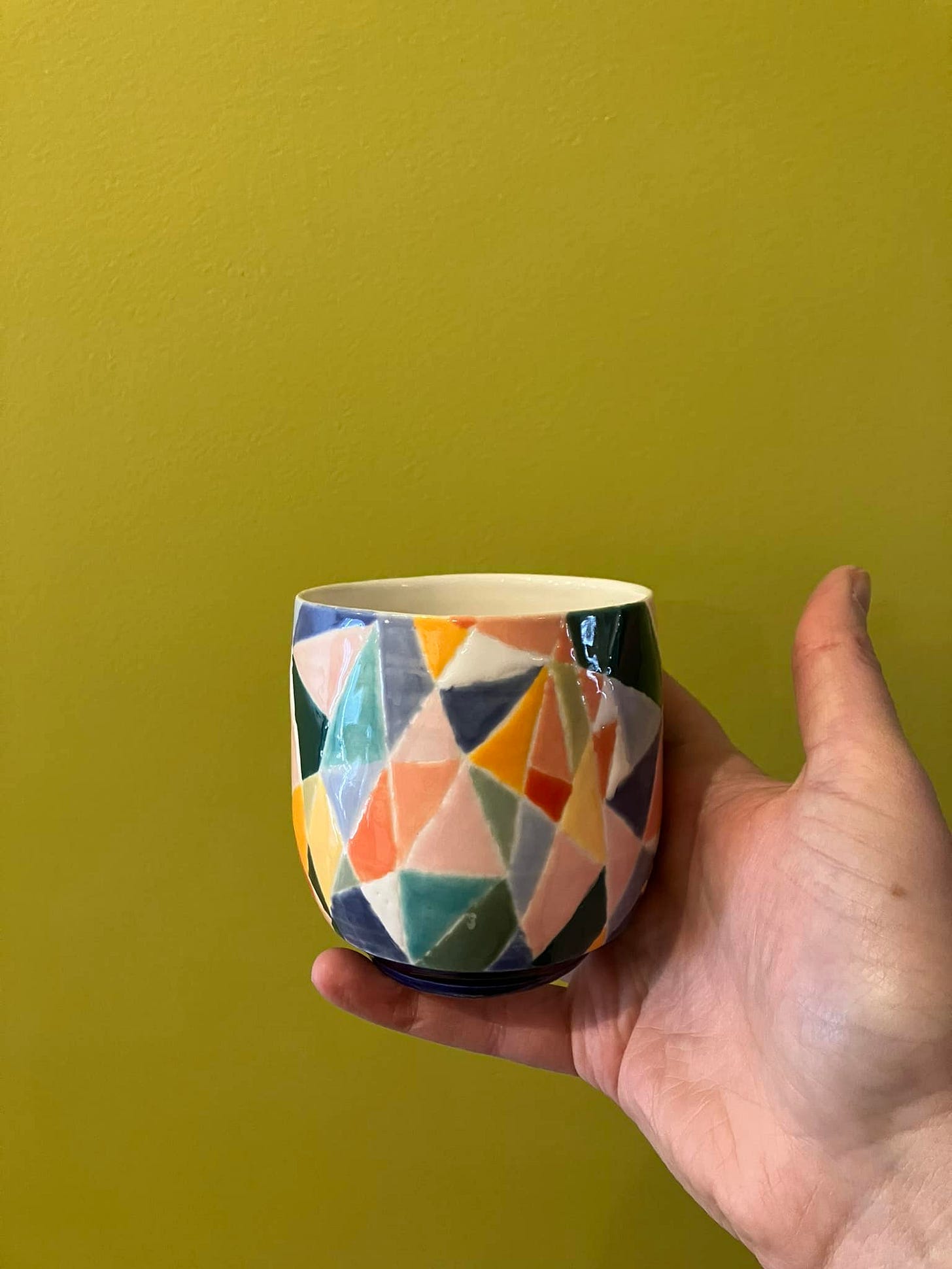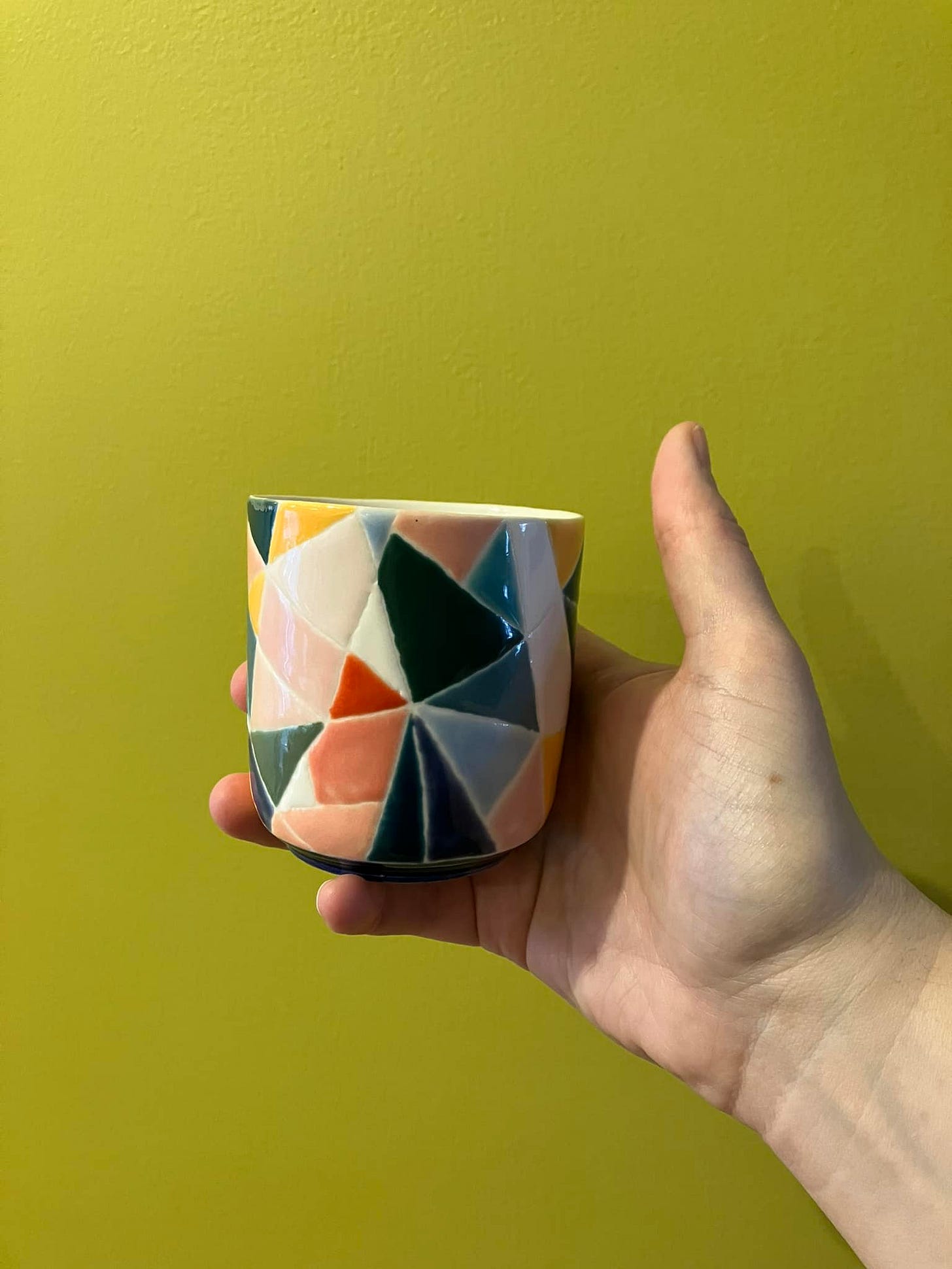Lately, I’ve been making colorful pots. I’ve posted a few of these on facebook and twitter, and in my Instagram stories. I am bad at making Instagram posts, though I should, especially since it’s supposed to be the place where all the potters hang out. If you’re an artist, can you follow me and I will follow you back? Or if you’re a writer, too. I am trying to learn to use IG more this year, especially since it’s so visual, especially since I am making new and weird pots. I’m starting to use the lightbox to take more professional photos of my work. I will probably have to buy a new phone, because the video quality is not good enough. It’s very old. I am also redoing my website for pots, so people can buy them eventually. I will have a small release, finally, maybe 30 pieces, ideally in the next six weeks or so, and will post about it here once it’s up.
The book is happening, too, and I am realizing it’s due in September, so this is it. No vacations likely on our horizon, even locally, until it’s in. I need to get this done. My writing buddy keeps texting me word counts and I cheer her on. She’s working on a novel that’s almost complete. Then she’ll go back and fill in plot holes, send it to me and other readers, see what people think. I’m so excited for her. It’s going to be a great book. I’ve already read most of it. Her agent will look at it after that; and probably then it’ll go to her editor for her last book, who is preliminarily interested and has right of first refusal. I will probably just send my book to my agent, and my husband, and my editor, and that’ll be it. A few weeks ago, someone on twitter was asking about beta readers. Who they are. What they do. That she’d heard from a friend who only sends the work to her editor. I would only send the pages to my editor, but it’s a new relationship, so I’ll send it to my agent too. And my husband. He is my first reader for whatever I write. I have no idea what people do if they do not have a partner who reads and edits everything. I guess that’s where beta readers come in.
In between writing, I have been making these colorful pots. I’m using something called encapsulated glaze stains, a type of glaze that relies almost exclusively on the pigment rather than the chemistry to make the colors, resulting in really bright options at cone 5-6 (2160-2200F). This is using the new thixotropic porcelain, which is impossibly sticky and has a horrific learning curve but I’m finally learning how to use it. Encapsulated glaze stains are a weird little chemical idea—they rely on frits, a mix of silica (clay) and glass (mine has boron in it; it’s also high in calcium) to make the glaze part, and the rest is mostly pigments (mason stains, in my case). Frits and mason stains are expensive, so making these can get pricey, but they’re a lot more affordable than buying them commercially (which I’ve also done). Most of my glaze recipes are much more complicated than this, relying on a combination of various chemicals to yield a reaction that makes certain colors in particular environments. I am real into copper red, which I’ve talked about before here, and have dozens of glaze recipes for this color. Copper red is why I’m making an old electric kiln into a downdraft thermal induction kiln in my backyard—I need to change the environment in the kiln during the firing process to eliminate oxygen, thus causing the copper red crystals to occur. I’m chasing something here. It’s insanity. If you don’t reduce the kiln enough, or too much, or you cool it at not the right speed, you can miss the red altogether. Things that are supposed to turn copper red and don’t are incredibly ugly, like muddy dishwater. You’ll have to trust me on this; I will not supply photos.
The other thing about making these encapsulated glaze stains is that they are Instagram friendly. I hate that idea, the fact that colorful glazes make for more engagement on social media, but it’s the truth. If you make the old glazes, chun blues or tenmokus or ash or oilspot or kaki glazes, some celadons, too, you may not catch the eye of someone scrolling. Some of these glazes are just too brown, too weird for modern consumption. Hard to photograph in some instances. Even though these are glazes that are over a thousand years old, or maybe two, part of an important ceramic tradition. The oldest celadon recipes date to the Han dynasty, which is 206 BCE. I love celadons as much as copper reds. There is a certain depth to them, and the history, of course, is so interesting. But people want flash, they want pretty things, colorful things. I am not discounting the work involved in making these colorful pieces. They actually take me a lot longer than most pots because I am trying to make the detail work and glaze each little sharp corner—and I’m currently freehanding all of it rather than using tape to work out the angles. I really should use tape. And then there’s the clay, which turns to ketchup if you look at it wrong. The pots are very sticky to trim, and I put a foot on each cup. Some of the pots are thin enough to be translucent, even with glazing, which is fun. Plus any carving I do takes hours, and I inevitably ruin several pots before I get one that I can put in the kiln. But it’s a different approach for sure. A brighter, flashier approach. I’m still doing the high fire stuff at the studio, at the community college, but that’s a slower process, waiting for enough work for the kiln to fill, testing glazes with friends and sharing recipes, wadding the bottom of each porcelain piece, because the studio doesn’t use enough kiln wash and I don’t want pots to stick to the shelf and run the risk of chipping, and then there is the firing time, which is much longer than my little test kiln in the basement. The glazes are worth testing for, though, I swear.






Was curious how to shop…is it password protected? Is it a puzzle? I need more clues. Let the sussing begin…
I love your pots! (When I first typed that out, I wrote "I love your pot," and that would have meant something very different! 💃🏻)